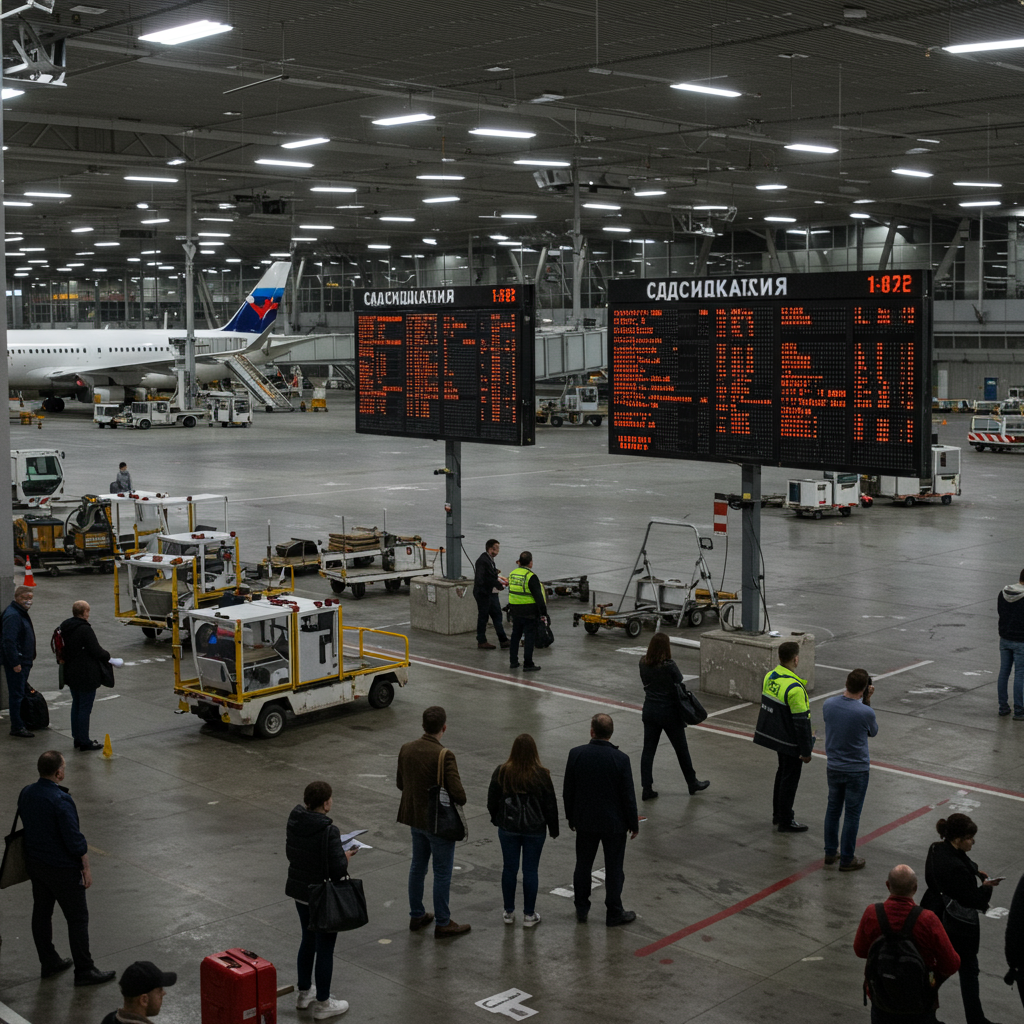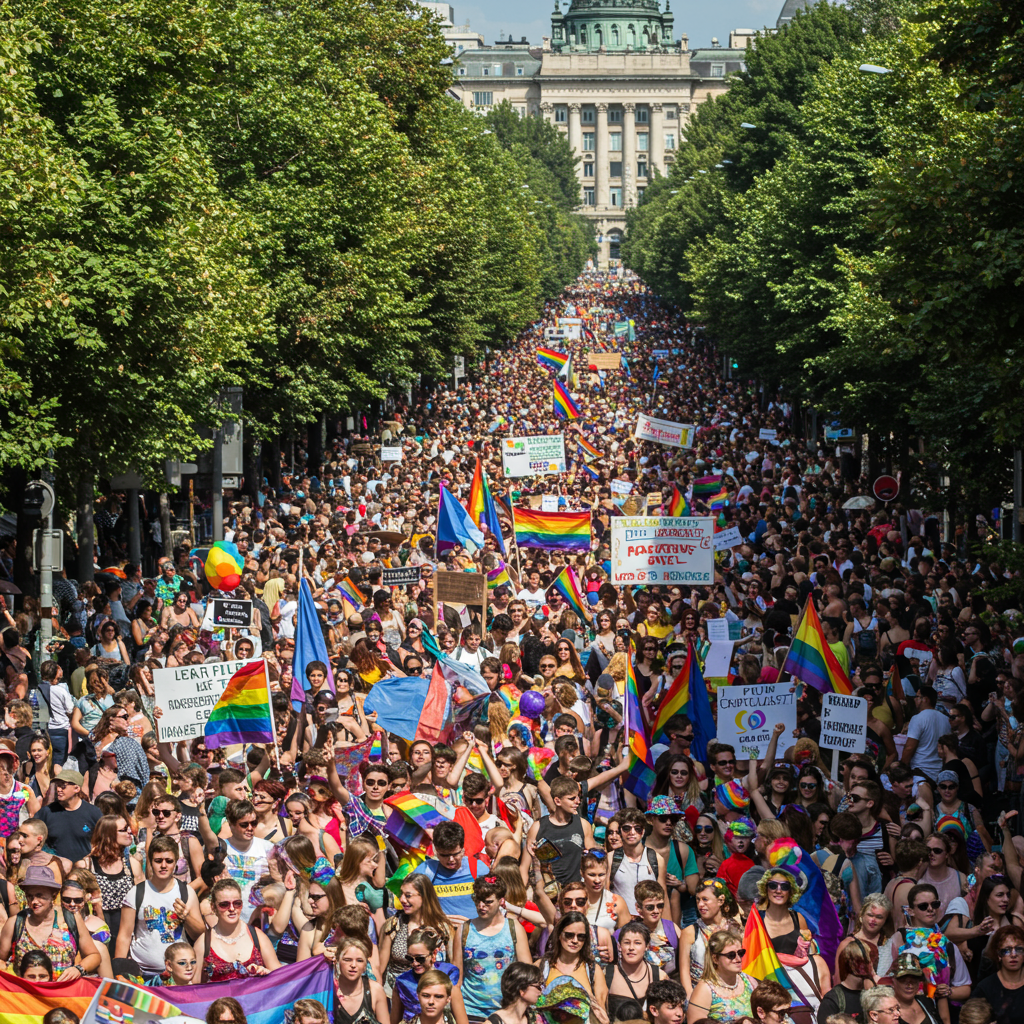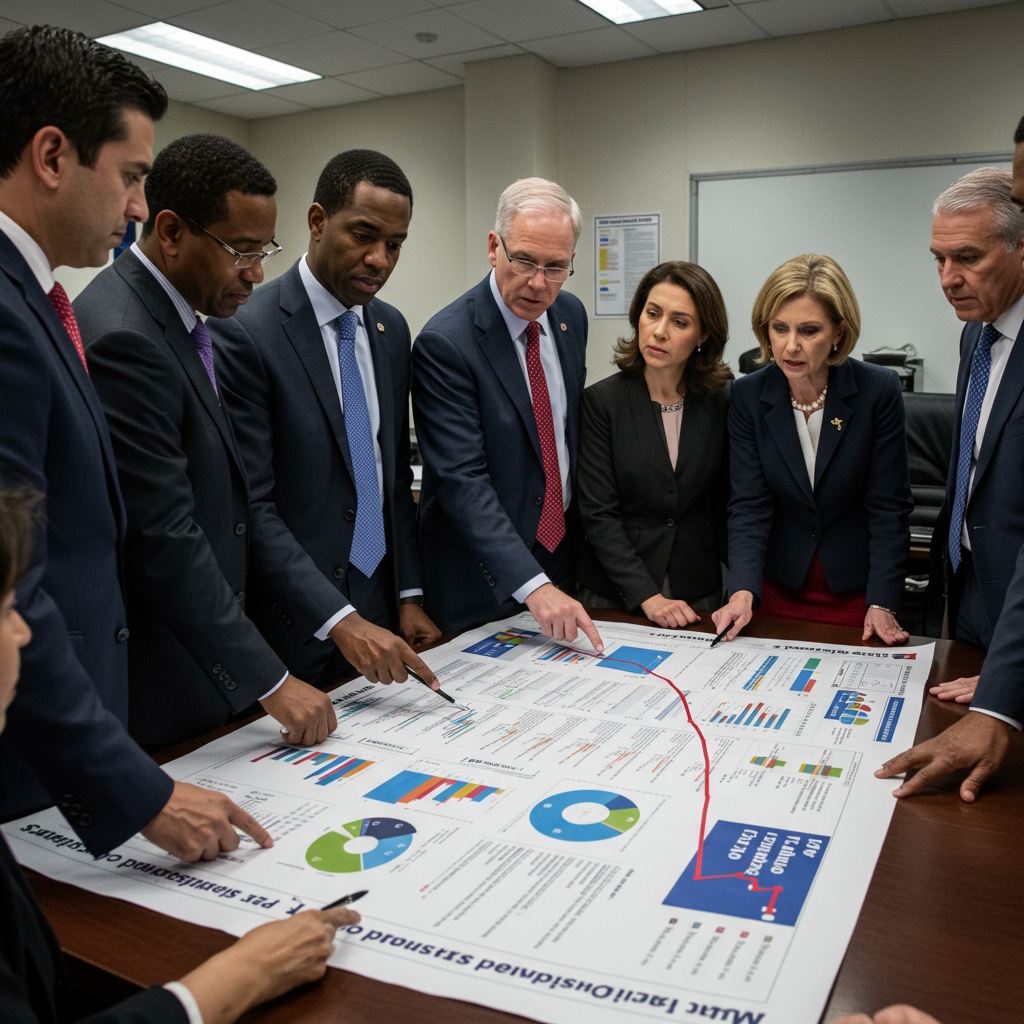Recent escalating tensions between Ukraine and Russia dramatically impacted air travel in Moscow, as Ukrainian drone attacks forced the temporary closure of the capital’s major airports. This significant disruption led to widespread flight cancellations and diversions, stranding thousands of passengers and highlighting the increasing reach of the conflict into civilian life. The unprecedented scale of these aerial assaults underscores a new phase in the ongoing conflict, bringing the war’s effects directly to Russia’s doorstep.
The Latest Disruption: Moscow Airports Grounded
A sustained barrage of Ukrainian drone attacks severely disrupted operations at Moscow’s key aviation hubs. Officials confirmed that all four major airports serving the capital—Sheremetyevo, Vnukovo, Domodedovo, and Zhukovsky—experienced temporary shutdowns. These closures, sometimes lasting hours, occurred ten times within a single 24-hour period, according to Russia’s Association of Tour Operators (Ator).
Scale of the Drone Onslaught
The Russian defense ministry reported intercepting a vast number of Ukrainian drones across various regions. Since Saturday morning, over 230 Ukrainian unmanned aerial vehicles (UAVs) were reportedly downed over Russian territory. Among these, 27 drones were specifically intercepted over the capital, Moscow, showcasing the intensity of the assault. Beyond the capital, the Kaluga region, southwest of Moscow, was also targeted, with Russian defense forces intercepting 45 drones, leading to the temporary closure of Kaluga International Airport. Drones were also shot down near the Ukrainian border in Rostov and Bryansk, and over the Black Sea, though no fatalities were reported from these specific drone incidents.
Widespread Flight Chaos and Passenger Impact
The immediate consequence of these airspace closures was severe air travel chaos. Over 140 flights destined for or departing from Moscow were cancelled outright, while more than 130 others had to be redirected to alternate airports. This led to considerable delays and left many passengers stranded, some for up to 12 hours. Social media footage reportedly depicted scenes of confusion and frustration at the affected airports. While most Moscow airports quickly resumed operations, Vnukovo faced a prolonged closure due to ongoing safety concerns and drone activity in its vicinity.
A Pattern of Escalation: Previous Incidents
This recent disruption marks a recurring pattern rather than an isolated event. In May, a similar large-scale Ukrainian drone attack reportedly stranded over 60,000 passengers at Russian airports, according to Russia’s defense ministry. Ukrainian officials have explicitly stated their intent to intensify UAV attacks on Russian soil. This strategy aims to disrupt Russian aviation and make the Russian population feel the repercussions of the conflict, as a direct response to Russia’s consistent bombardments of Ukrainian urban centers. Analysts suggest that Ukraine’s objective in launching waves of drones is to overload Russia’s air defense systems, seeking to overwhelm their capacity.
Reciprocal Strikes: Ukraine Under Intense Fire
While Moscow faced drone incursions, Ukraine simultaneously endured a fresh wave of Russian air strikes and drone attacks. These reciprocal bombardments underscore the brutal, unrelenting nature of the conflict, affecting civilian populations on both sides.
Civilian Casualties and Infrastructure Damage
Russian air strikes inflicted casualties and significant damage across Ukraine. At least three people tragically died, including two individuals in Donetsk and a 78-year-old woman in Sumy. Residential buildings in Sumy were reportedly burned down, and homes in Donetsk were damaged or destroyed. In Kyiv, explosions rocked the capital in the early hours, causing outdoor kiosks to burn and smoke to pour from a damaged subway station entrance. Beyond these urban centers, other front-line areas like Kharkiv, Dnipropetrovsk, and Zaporizhzhia also came under attack. The western city of Ivano-Frankivsk experienced what its mayor described as the largest attack on the region since the conflict began, with air defenses activated.
Ukraine’s Air Defense Response
Ukraine’s air force actively countered the Russian assault. Overnight into Sunday, Ukrainian forces reported shooting down 18 out of 57 incoming Russian drones. An additional seven drones were reportedly lost due to successful radar jamming by Ukrainian defenses. The Ukrainian Air Force also claimed that Russia launched a substantial number of drones and missiles, with reports indicating over 450 projectiles targeting various Ukrainian cities. This constant aerial threat necessitates a robust and adaptive air defense strategy from Ukraine.
Escalating Conflict and Diplomatic Impasse
Amidst the intensifying military actions, leaders from both Russia and Ukraine articulated their positions on potential peace talks, highlighting a persistent diplomatic deadlock. The conflict has now dragged on for nearly three and a half years since Russia’s full-scale invasion.
Divergent Paths to Peace
Kremlin spokesman Dmitry Peskov stated that Russian President Vladimir Putin remains open to a peaceful settlement with Ukraine. However, Peskov clarified that Moscow’s priority is to “achieve our goals” through such a settlement, describing the peace process as “long” and “not easy.” Putin’s stated goals for peace typically include Russia retaining all seized territories and Ukraine abandoning its aspirations to join NATO, terms that Kyiv and its Western allies consistently reject.
In contrast, Ukrainian President Volodymyr Zelensky proposed a new round of talks with Moscow, aiming to restart negotiations that had previously stalled. Zelensky reiterated his willingness to meet Putin face-to-face, emphasizing that a “meeting at the leadership level is needed to truly ensure peace.” Previous negotiation attempts between the two nations have failed to achieve a lasting ceasefire but have facilitated prisoner exchanges, offering a glimmer of cooperation in an otherwise hostile environment.
International Reactions and Support
Recent developments concerning international support for Ukraine also shaped the diplomatic landscape. US President Donald Trump announced that the United States would send “top-of-the-line weapons” to Ukraine via NATO countries, a significant boost for Kyiv. Trump also threatened Russia with severe tariffs if a deal to end the conflict is not reached within 50 days, expressing disappointment with Putin but signaling his continued engagement. Peskov, responding to Trump’s statements, acknowledged the world’s familiarity with his “harsh and straightforward rhetoric” but recognized Trump’s reaffirmed intention to facilitate a peaceful settlement.
Broader Implications: Aviation Security in a New Era
The frequent drone incursions over Russian airspace, particularly targeting major transportation hubs like Moscow airports, signify a troubling new dimension in modern warfare. This trend highlights the increasing vulnerability of civilian infrastructure to evolving threats.
Vulnerability of Civilian Airspace
The conflict’s increasing encroachment into daily civilian life, specifically through the disruption of air travel, raises critical questions about airspace security. Drones, once considered a lesser threat, are now recognized as one of the most significant hazards to aviation. The repeated closure of major airports due to drone activity underscores the perceived fragility of air travel systems and necessitates heightened scrutiny of Russia’s airspace. While Russian defense systems have been largely effective in intercepting incoming drones, the sheer volume of attacks requires substantial effort to repel, implying that better coordinated assaults could inflict more widespread damage.
Anticipating Future Disruptions and Security Measures
Following these incidents, airports are implementing additional security measures to mitigate risks. Governments are also considering longer-term protective strategies to secure critical infrastructure, including airports and other transport nodes. Globally, this incident is seen as a potential template for a “new normal” in warfare, prompting other countries to re-evaluate their airspace security in the face of escalating drone threats. The swiftness of Moscow’s recovery, coupled with its planned security enhancements, could influence how international aviation authorities prepare for and respond to similar drone infiltrations. Travelers should anticipate further delays and disruptions as airlines manage backlogs and as security measures evolve.
Frequently Asked Questions
What specific Moscow airports were affected by the recent drone attacks?
The recent Ukrainian drone attacks led to temporary closures and significant disruptions at all four major airports serving Moscow: Sheremetyevo, Vnukovo, Domodedovo, and Zhukovsky. Vnukovo airport was particularly impacted, experiencing a prolonged closure due to safety assessments. In addition to Moscow, Kaluga International Airport, southwest of the capital, also faced a temporary shutdown following drone intercepts in its region.
What are the broader implications of these drone attacks for air travel in Russia?
These drone attacks signify an escalating challenge for Russian air travel, extending the conflict’s reach directly into civilian infrastructure. The incidents demonstrate the vulnerability of major transport hubs to UAV threats, leading to frequent airspace closures, widespread flight cancellations, and diversions. This “new normal” in warfare means travelers should anticipate ongoing volatility, potential delays, and increased security measures at Russian airports as authorities implement longer-term protective strategies.
How often do Moscow airports face drone-related closures, and what should travelers know?
Moscow airports have faced multiple drone-related closures in recent months, with the most recent incident seeing closures ten times in a single 24-hour period. A previous large-scale attack in May also caused significant passenger disruption. Travelers planning flights to or from Moscow should be aware of this recurring pattern. It is advisable to check flight statuses regularly with airlines and monitor official travel advisories, as sudden disruptions due to drone activity have become an increasing possibility.
Conclusion
The recent closures of Moscow airports due to Ukrainian drone attacks represent a stark escalation in the ongoing conflict. This event, alongside concurrent Russian air strikes on Ukrainian cities, underscores the intense reciprocal nature of the war and its growing impact on civilian life and infrastructure in both nations. As both sides remain committed to their objectives amidst a persistent diplomatic stalemate, the prospect of further disruptions to air travel and other critical services remains high. This evolving landscape of warfare demands continuous adaptation in security protocols and serves as a powerful reminder of the conflict’s wide-ranging consequences.




